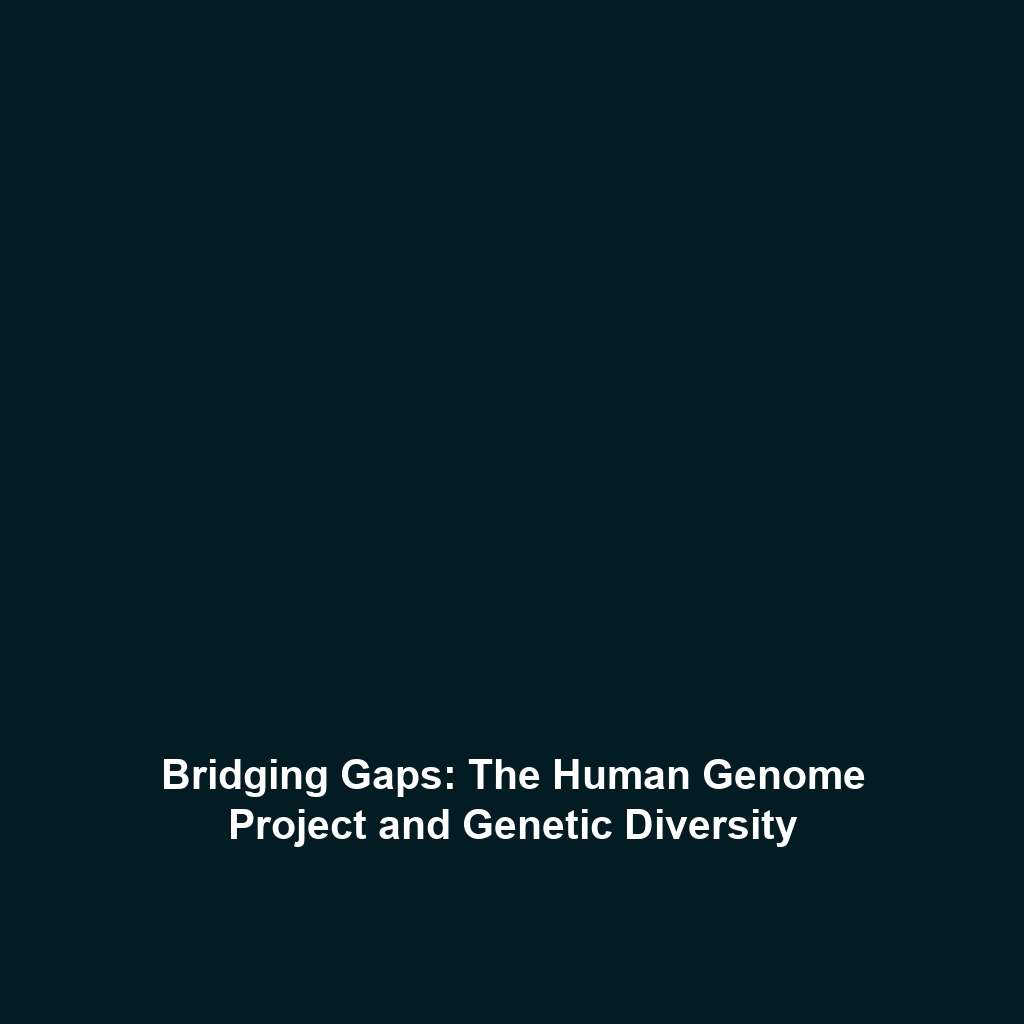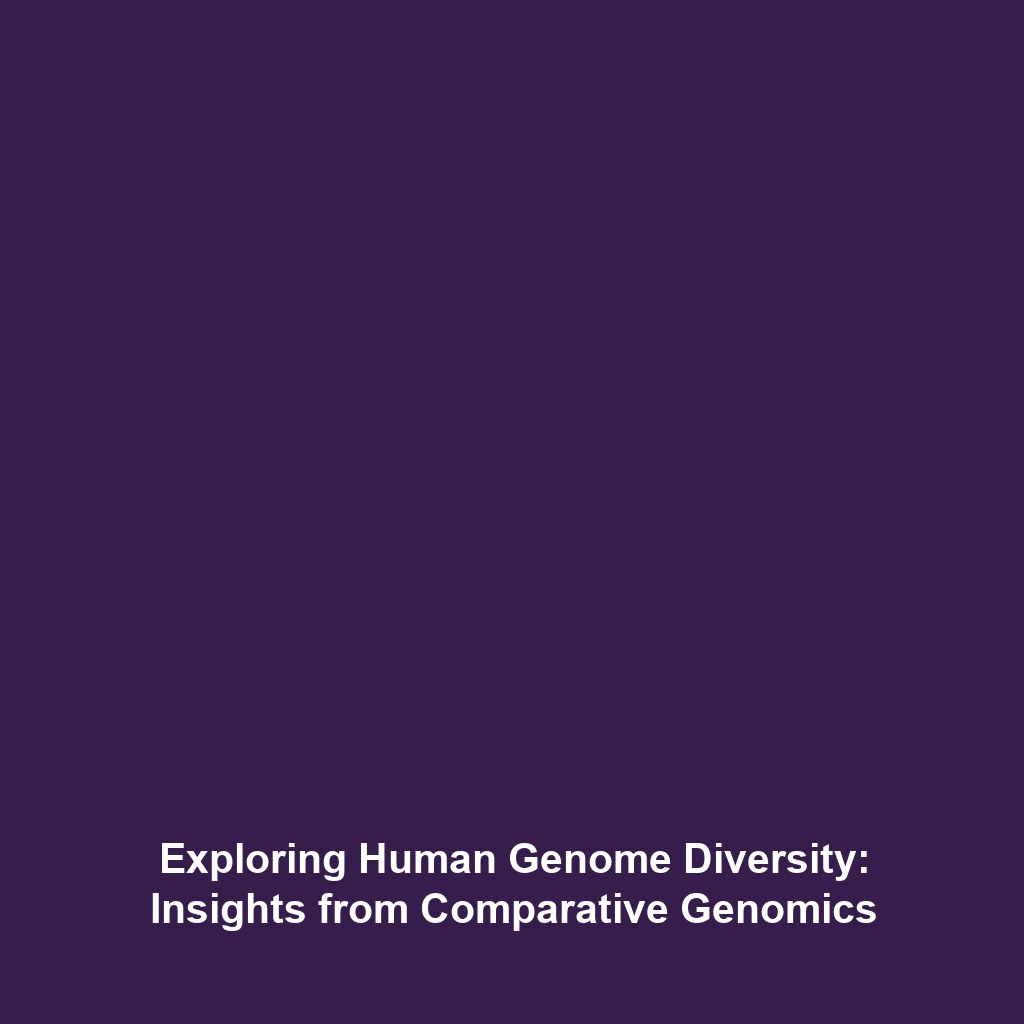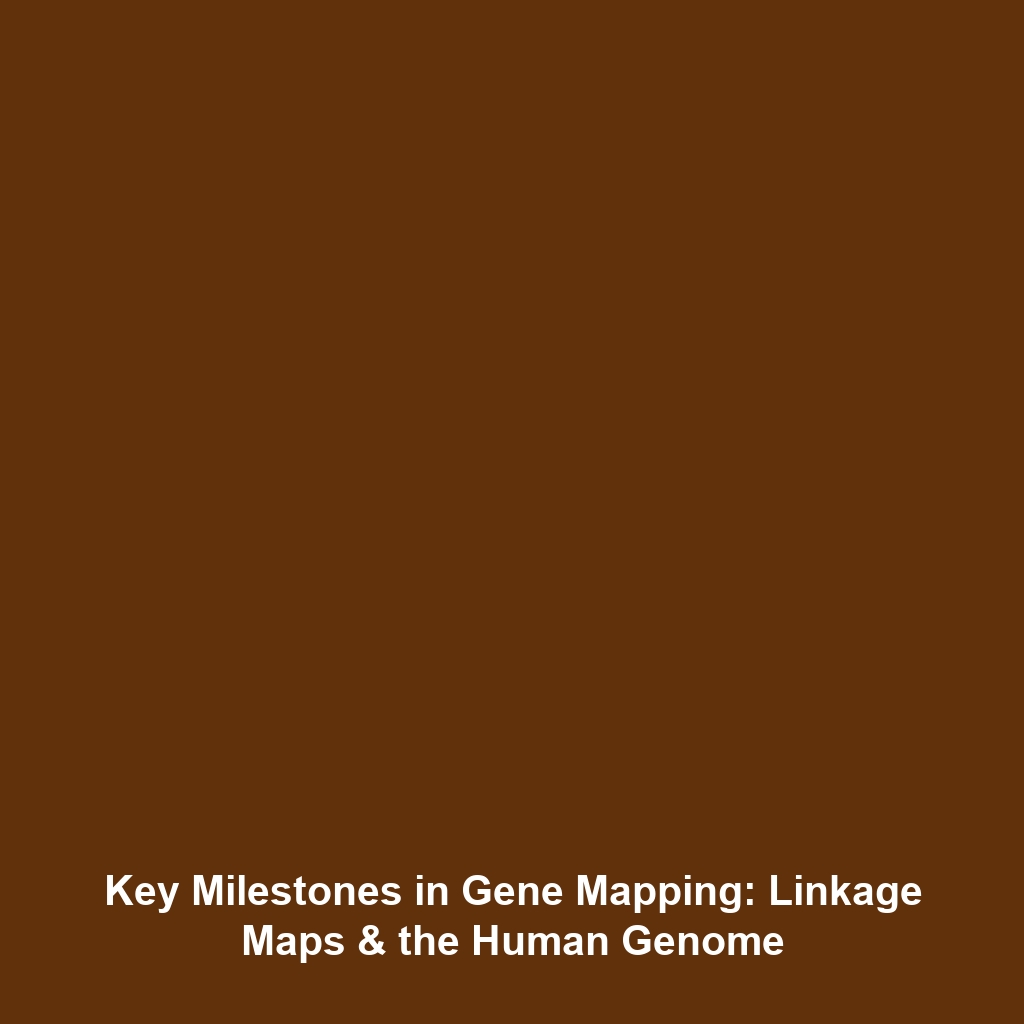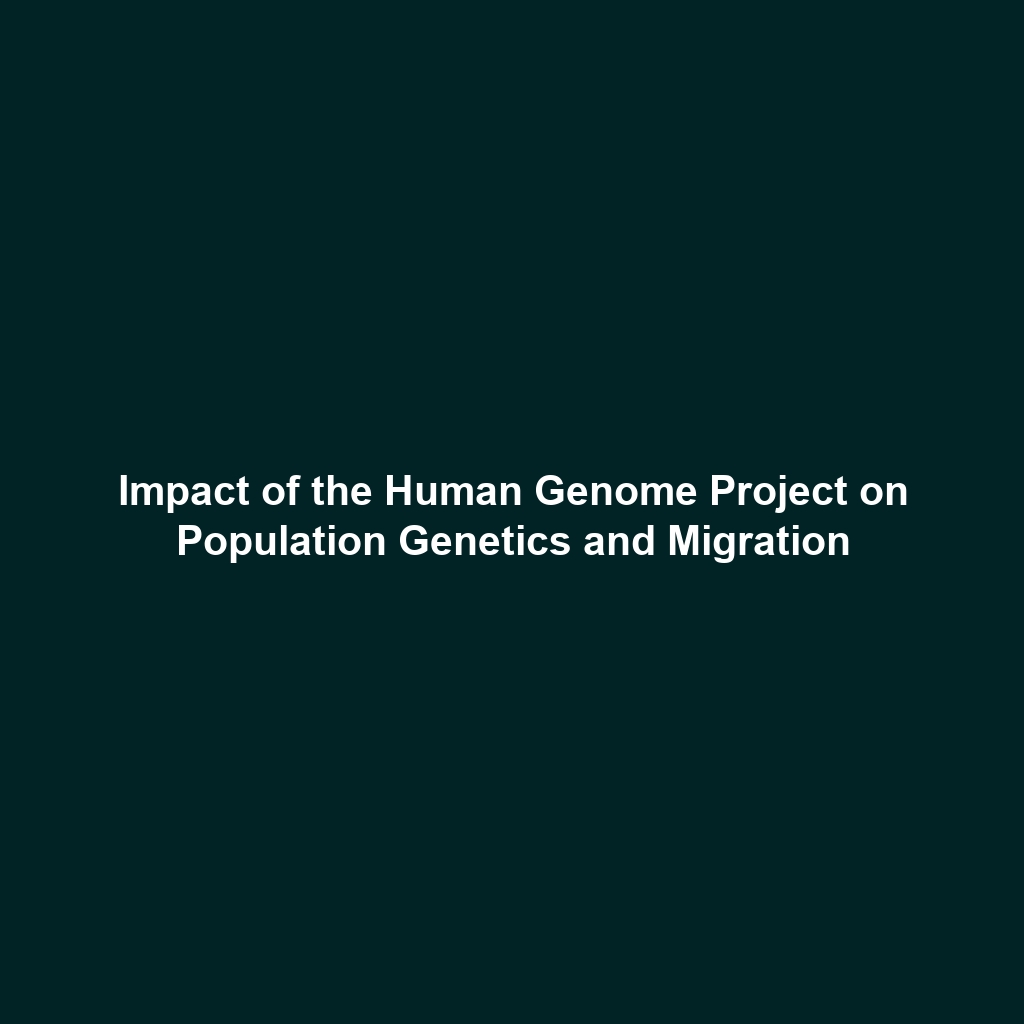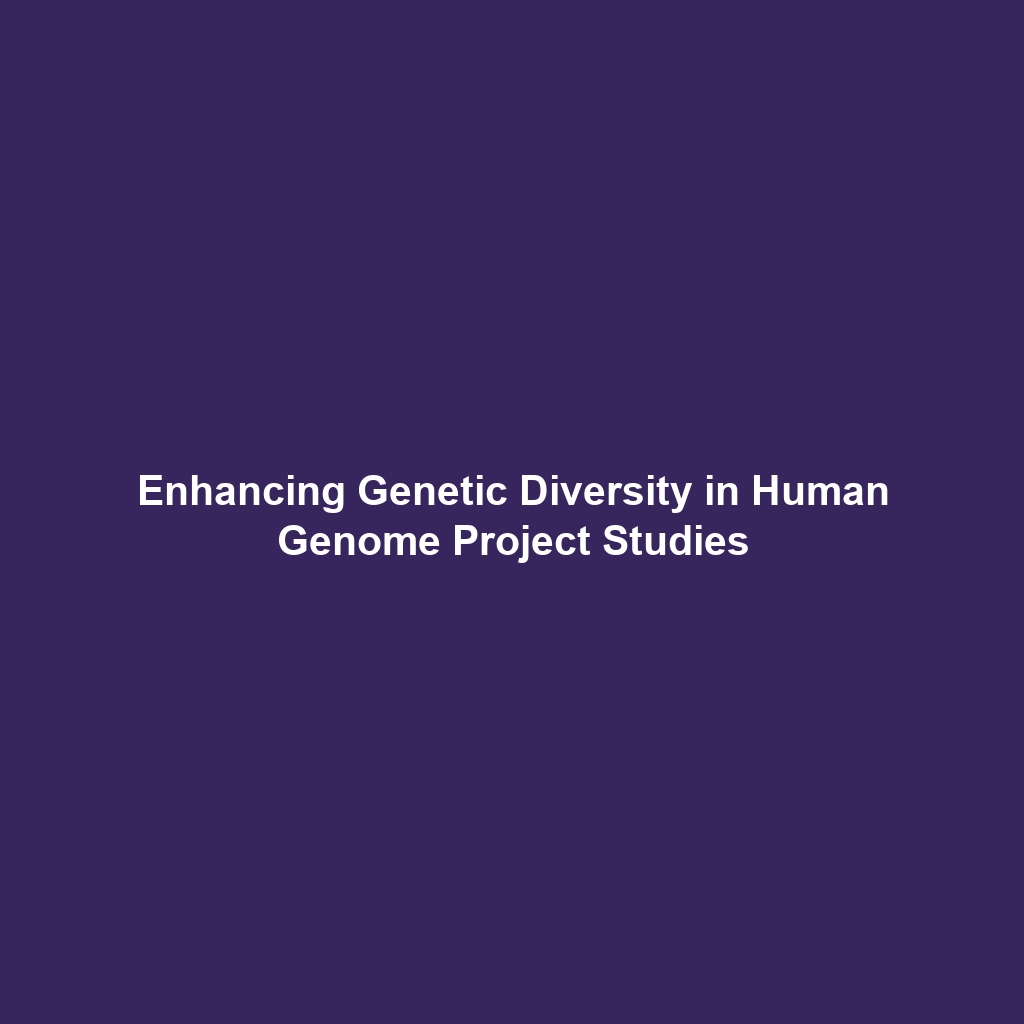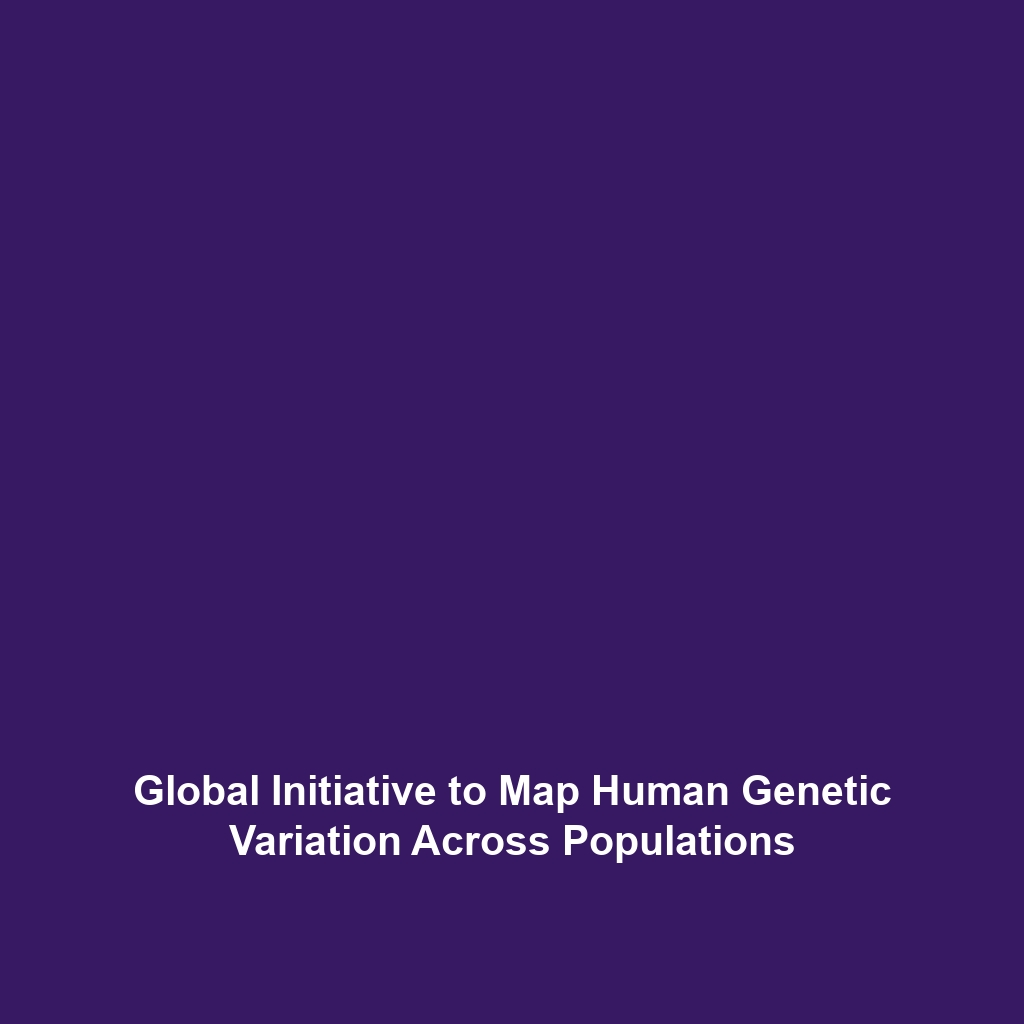The Human Genome Project’s Focus on European Ancestry: Implications for Genetic Diversity
Introduction
The Human Genome Project (HGP), a landmark scientific endeavor completed in 2003, successfully mapped the entire human genome. However, one of its critical shortcomings is the predominance of data from individuals of European ancestry. This limited focus raises significant concerns about our understanding of genetic diversity across various populations worldwide. As the field of genomics continues to evolve, recognizing these gaps is essential for unlocking the full potential of the Human Genome Project, particularly in areas such as personalized medicine and public health initiatives.
Key Concepts
The Focus on European Ancestry
The HGP primarily included participants of European descent, leading to a genetic model that may not accurately represent the genomic diversity of non-European populations. This bias can skew research findings and limit the applicability of genomic advancements. Key concepts related to this issue include:
- Population Genetics: The study of genetic variation within and between populations.
- Genomic Diversity: The variation in DNA among individuals across different populations.
- Ethnic Diversity in Genomics: The necessity of including diverse ethnic groups in genomic research to enhance data reliability.
Applications and Real-World Uses
An understanding of genetic diversity is crucial for applying genomic research effectively. The limited focus of the HGP on individuals of European ancestry poses challenges in several real-world applications:
- Precision Medicine: Tailoring medical treatment based on genetic understanding may be inadequate for non-European populations.
- Genetic Disease Research: Many genetic disorders may have different frequencies and manifestations in diverse populations.
- Pharmacogenomics: Drug responses can vary significantly based on genetic heritage, which is not well understood beyond European-centric studies.
Current Challenges
Studying the HGP’s focus on European ancestry presents several challenges and limitations:
- Data Bias: An overwhelming reliance on European ancestry data diminishes the relevance of findings for other populations.
- Healthcare Inequities: A lack of diversity in genomic studies can exacerbate health disparities globally.
- Limited Research Funding: Insufficient resources are allocated to study underrepresented populations in genomics.
Future Research and Innovations
The field of genomics is rapidly evolving, with an urgent need to incorporate more diverse genetic data. Future research initiatives focusing on underrepresented populations aim to bridge the gaps identified in the HGP. Notable trends and innovations include:
- Next-Generation Sequencing: Advances in sequencing technology can enhance the ability to study diverse ethnic groups.
- Global Genomic Initiatives: Collaborative efforts to include participants from various populations globally are on the rise.
- Ethical Considerations: Increasing awareness of ethical implications may guide more inclusive research practices.
Conclusion
In summary, the Human Genome Project’s focus on individuals of European ancestry highlights significant gaps in our understanding of global genetic diversity. Addressing these gaps is crucial for ensuring that genomic research benefits all populations equitably. As future research expands to include diverse groups, it is essential for scientists and policymakers to collaborate, fostering a more inclusive approach to genomics. For more information on genetic diversity and its implications in the field of genomics, visit our related articles on genomic diversity and precision medicine.
